people
members of the collaboration
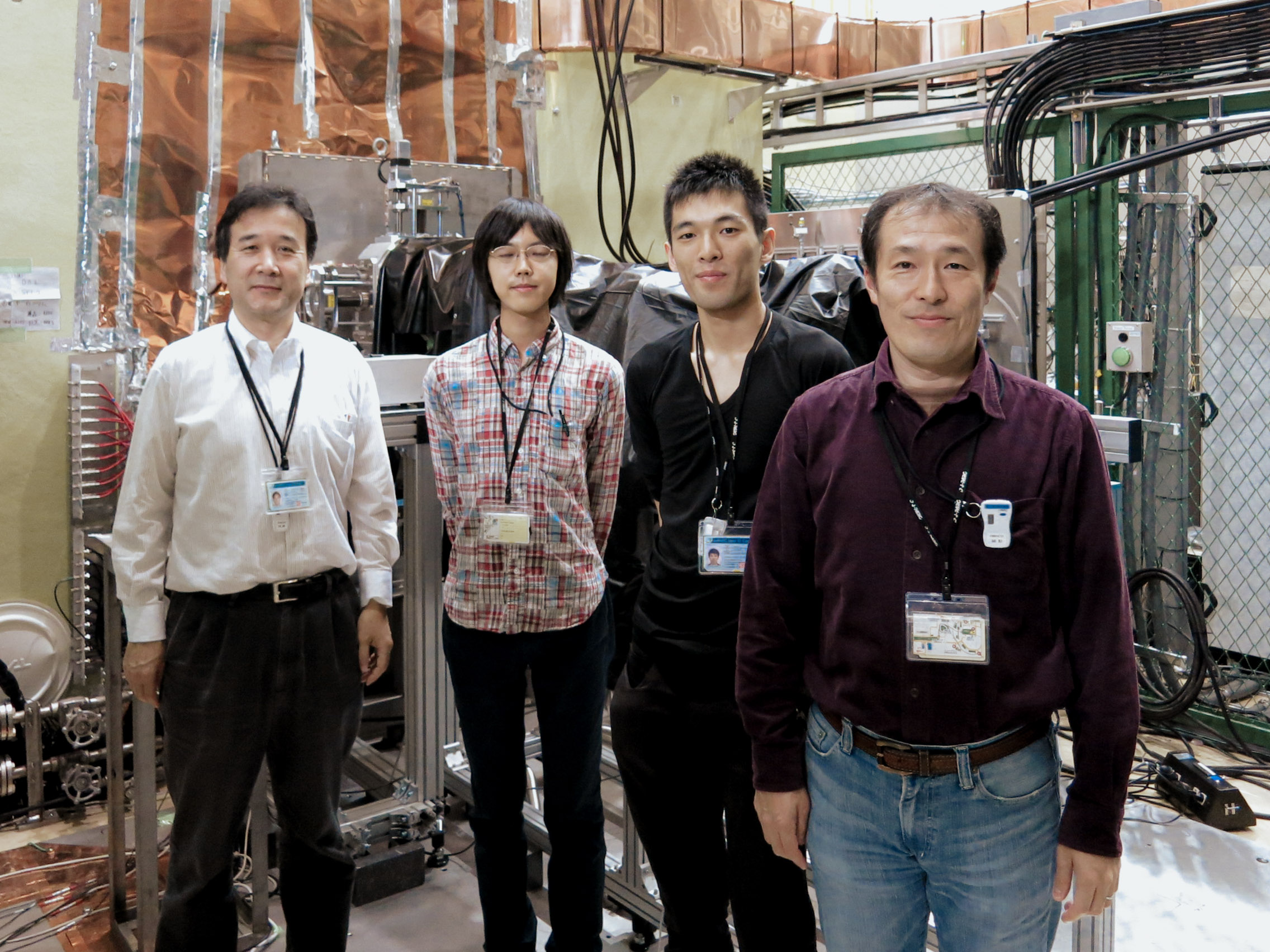
The first experimental trial in 2014. In this initial run, no resonance was observed as the small signal was overwhelmed by severe background events. Following this, there was no beam delivery in 2015 due to trouble with the facility’s mercury target.
From left to right: Kenya KUBO, Sohtaro KANDA, Kaduo TANAKA, Hiroyuki A. TORII
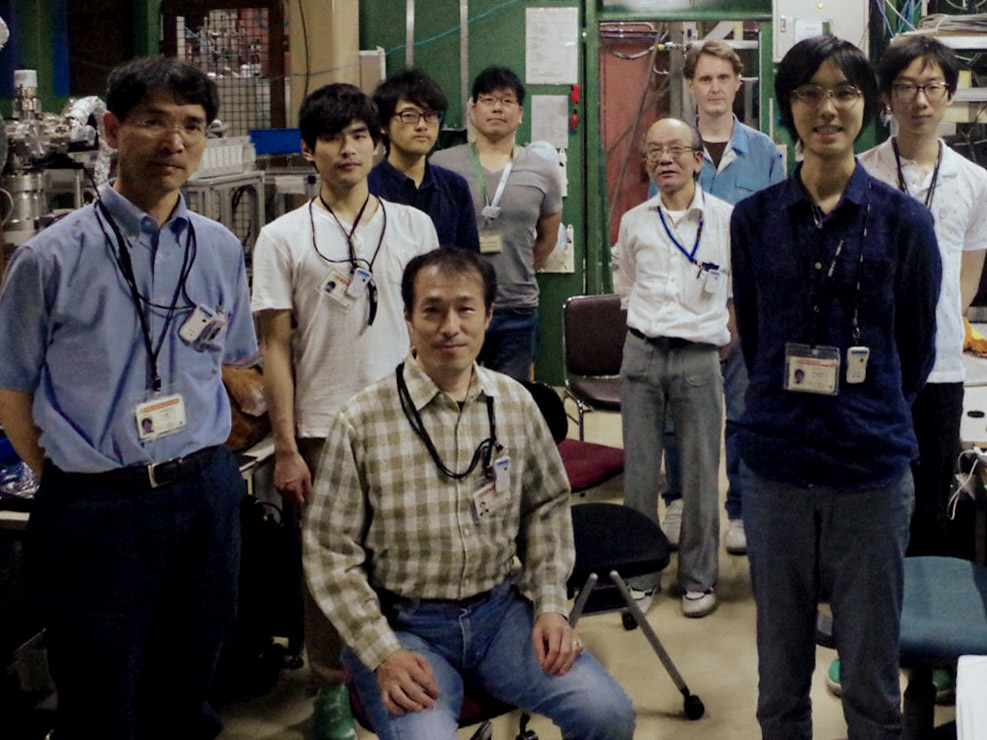
The second experimental trial of 2016. This run featured improvements to the microwave system and, crucially, the successful suppression of beam-derived background events which had hindered the initial attempt. These upgrades led to the first successful observation of the muonium HFS resonance using a pulsed muon beam.
From left to right, back to front: Katsuhiko ISHIDA, Shun SEO, Daisuke YAGI, Tsutomu MIBE, Koichiro SHIMOMURA, Patrick STRASSER, Yasuhiro UENO, Hiroyuki A. TORII, Sohtaro KANDA

The third experiment of 2017. This run featured improvements in background suppression and included a study on the dependence of the signal on microwave power. A new method to directly analyze the Rabi oscillation was also developed.
From left to right, back to front: Shun SEO, Yutaro SATO, Shoichiro NISHIMURA, Daisuke YAGI, Sohtaro KANDA, Koichiro SHIMOMURA, Toya TANAKA, Hiroyuki A. TORII, Yasuhiro UENO
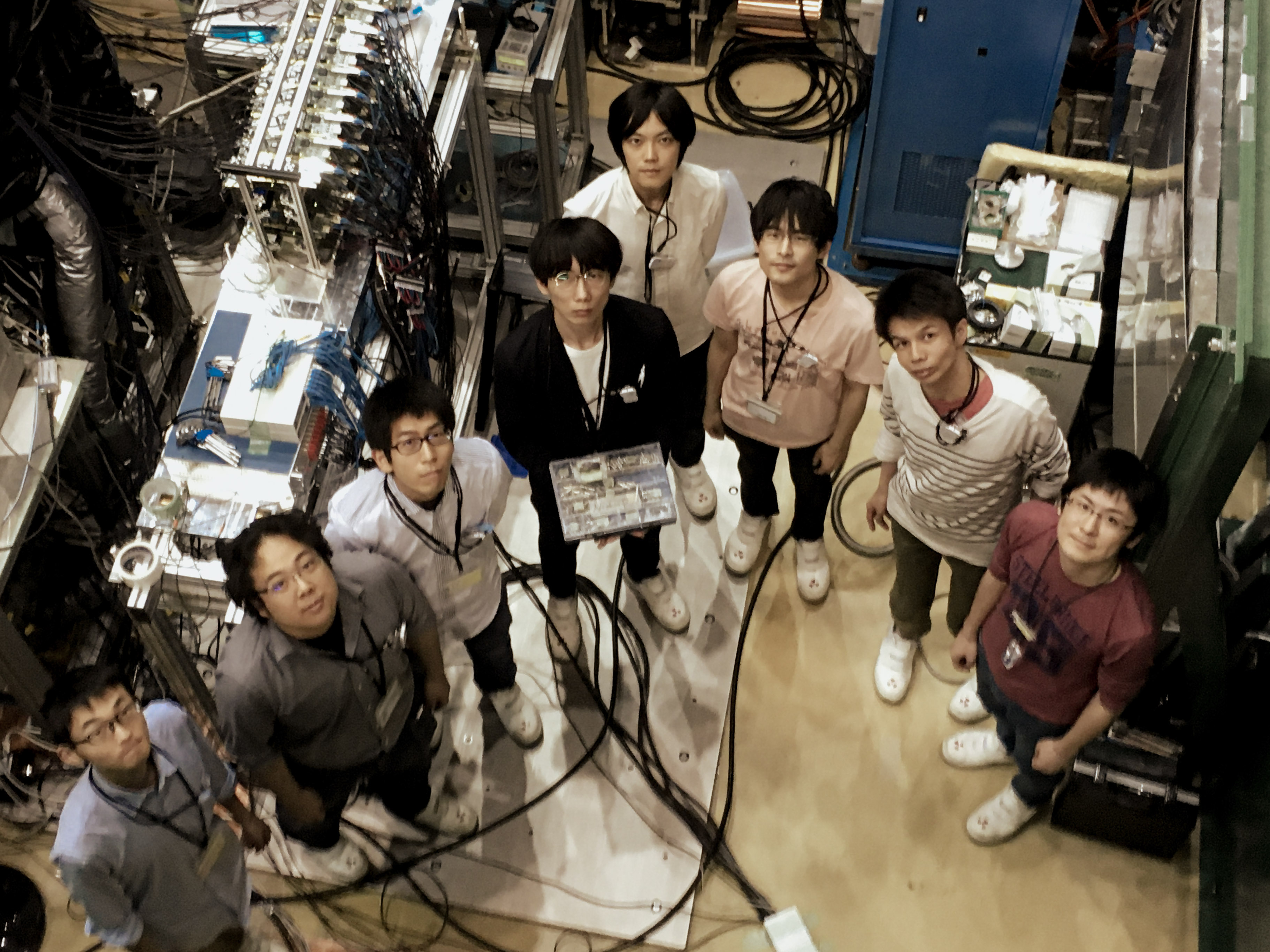
The fourth experiment of 2018, which focused on improving the stability and control of the measurement environment. In this run, we studied the gas pressure dependence, conducting an experiment at the lowest gas pressure to date.
From left to right: Kazuki NAMBA, Yuki HONDA, Takashi YAMANAKA, Yasuhiro UENO, Sohtaro KANDA, Shun SEO, Yutaro SATO, Taihei AOYAGI
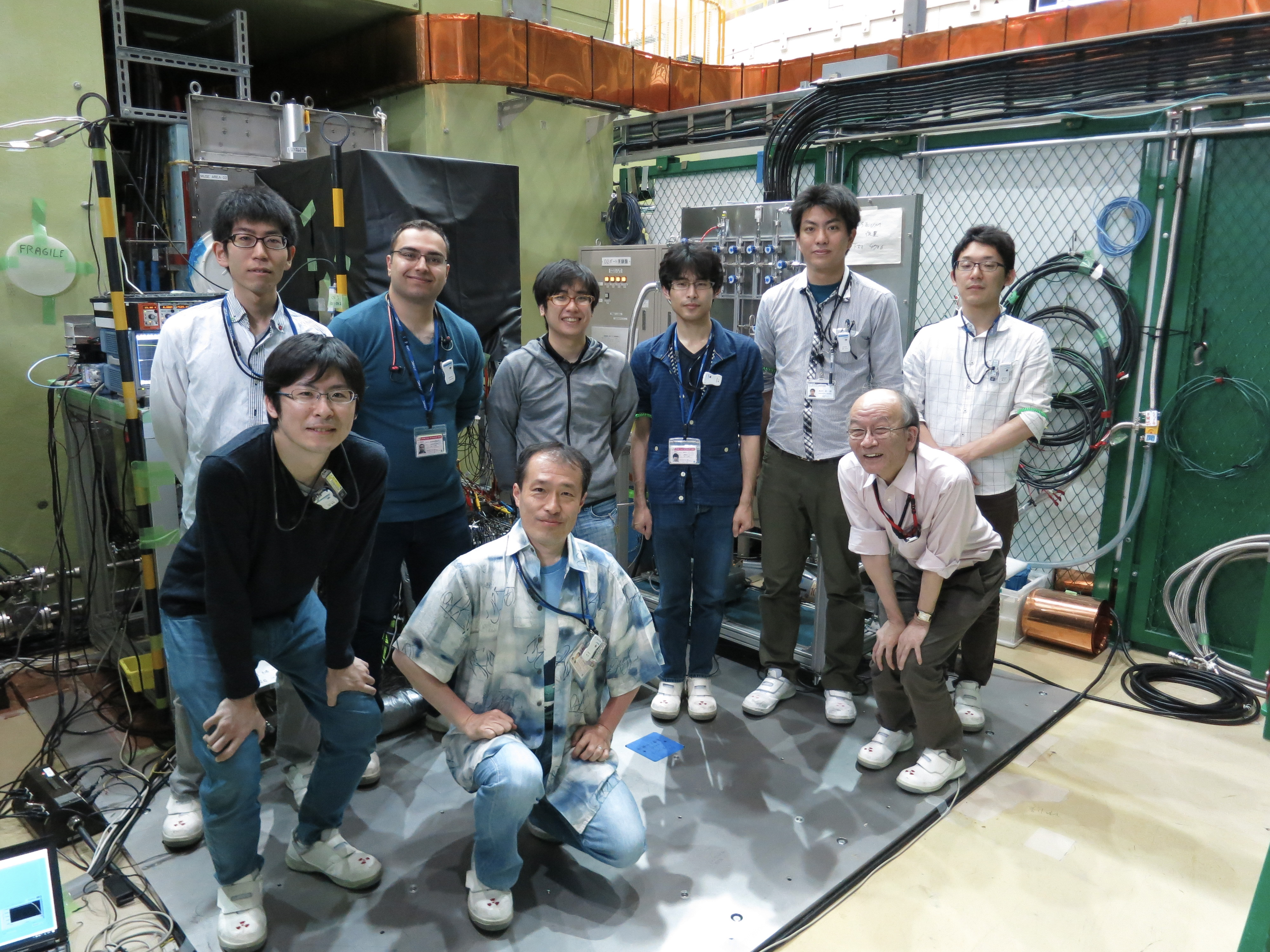
The fifth experiment of 2019, dedicated to studying the compensation of the gas density shift using a Krypton/Helium (Kr/He) mixture. Since helium and krypton cause frequency shifts with opposite signs upon atomic collision, experimenting with a precisely proportioned mixture allows for the suppression of systematic errors associated with extrapolating to zero pressure.
From left to right, back to front: Taha YOUSSEF, Takashi YAMANAKA, Toya TANAKA, Shun SEO, Shoichiro NISHIMURA, Seiso FUKUMURA, Yutaro SATO, Hiroyuki A. TORII, Koichiro SHIMOMURA
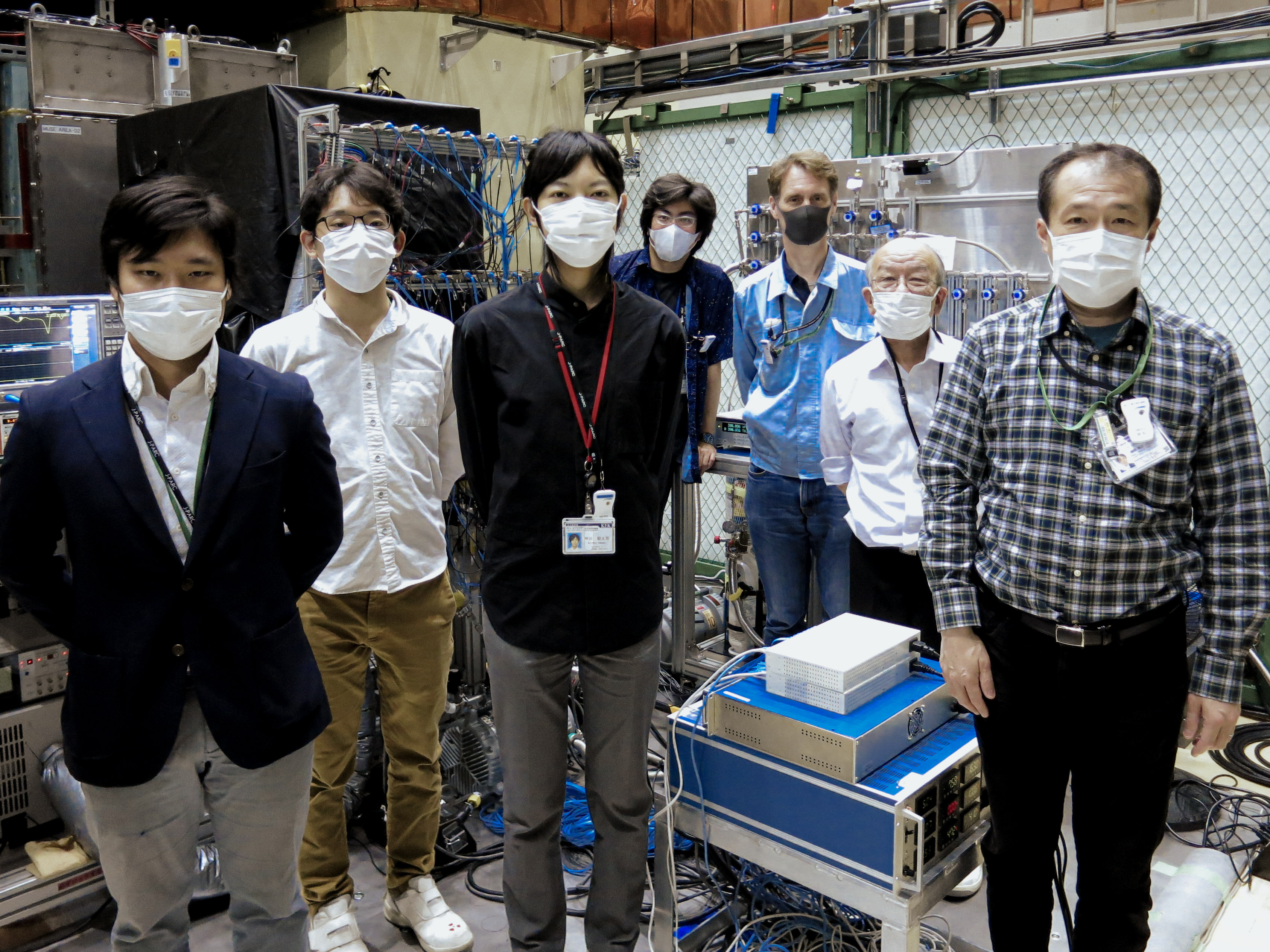
The sixth experiment of 2021, which took place in May. This was the final experiment conducted at the MUSE D2 area, focusing on a study of Kr/He gas mixtures at higher gas densities. For this run, the gas chamber was modified to increase its pressure resistance to 4 atm.
From left to right: Hiroki TADA, Seiso FUKUMURA, Sohtaro KANDA, Shoichiro NISHIMURA, Patrick STRASSER, Koichiro SHIMOMURA, Hiroyuki A. TORII.
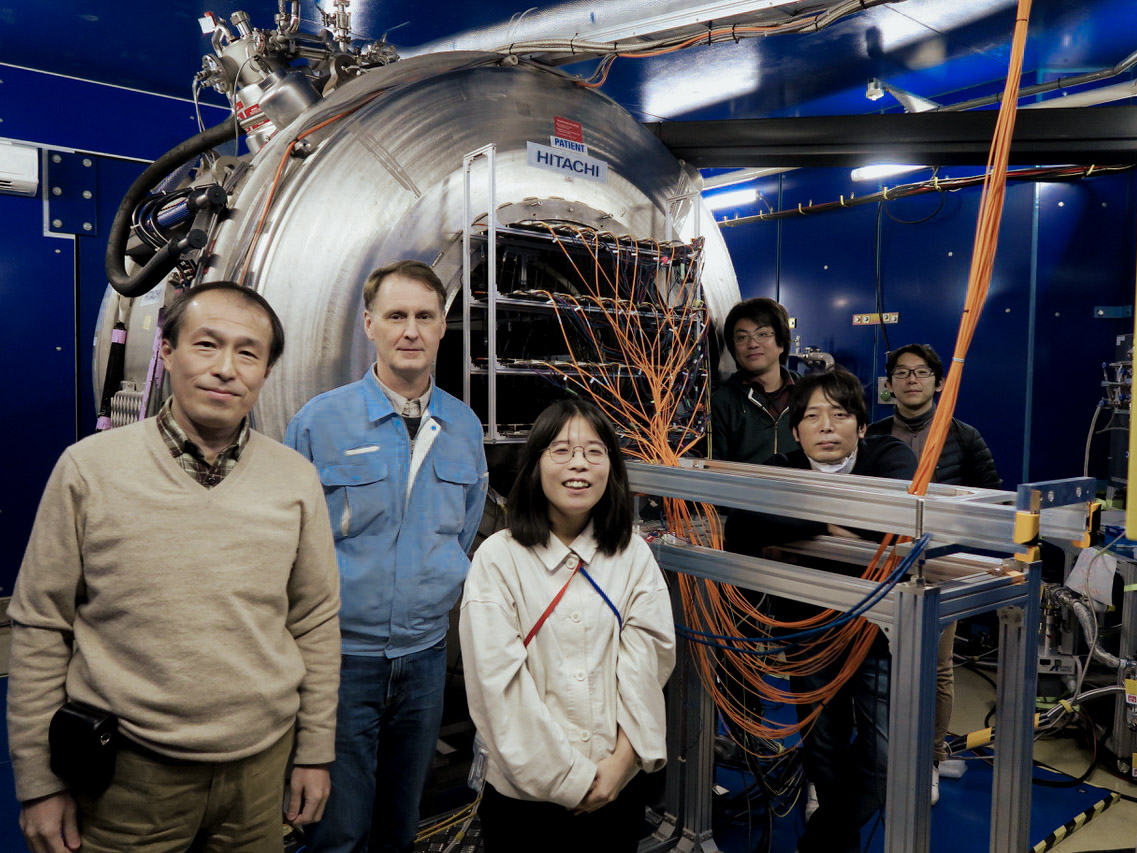
The first high-field experiment, conducted in February 2025. Although the beam power was limited to 100 kW due to an issue with the facility, both the ν12 and ν34 resonances were successfully observed under a 1.7 T magnetic field.
From left to right: Hiroyuki A. TORII, Patrick STRASSER, Yu GOTO, Shoichiro NISHIMURA, Takayuki YAMAZAKI, Seiso FUKUMURA